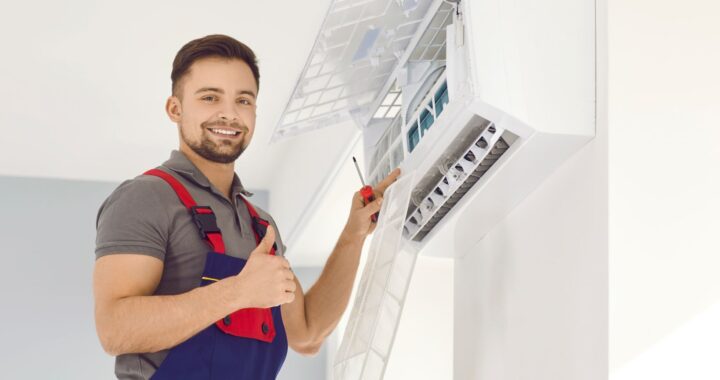All About Injection Insulation for New Homes and Commercial Buildings

Injection foam insulation can be easily added into wall cavities from outside without having to open or tear down walls. It fills space around electrical outlets, pipes, and other areas where other insulations cannot reach.
It’s a Great Way to Insulate Concrete Walls
Concrete block walls are a ubiquitous sight in Florida homes and commercial buildings alike. More commonly referred to as cinder block, concrete block, or cement block, these porous walls allow air from outside into your home or building during winter and allow warm air out during summer (source: https://www.greenbuildingtalk.com/Forums/tabid/53/aff/22/aft/65783/afv/topic/Default.aspx) forcing your HVAC system to work harder to maintain an ideal ambient temperature throughout the year and driving up energy bills more than necessary.
Spray or injection foam insulation is an ideal way to insulate concrete block walls. Injection insulation fills the cores of each concrete block for enhanced thermal performance and comfort and can even be easily installed through existing holes in architecture. It provides superior thermal performance and comfort. It is also an efficient and cost-effective option when retrofitting existing block architecture, as pre-existing holes may need filling.
No matter which insulating material you opt for, it is vital that it be installed correctly so as to eliminate air leakage and realize energy savings. Doing this will ensure airtight seals and maximum energy savings potential are realized. Once pressed into place, injection foam expands quickly to fill all spaces, even around wires, pipes, and electrical outlets – leading to greater comfort, reduced energy bills, and an increase in property value.
It’s a Good Way to Reduce Noise
Injection foam insulation can be easily added into new and existing homes and is especially well suited for older or poorly insulated structures. Perfect for retrofit projects and retrofit jobs alike, injection foam insulation utilizes a mixture of resin and foaming agent that’s injected through hoses into holes drilled in exterior walls – this method of application allows professionals to access wall cavities while protecting exterior siding against damage from this method of insulation installation.
The injection process can usually be completed in two days or less and is highly affordable – potentially saving thousands in energy costs over time. Professional assistance should be sought, though, in order to get this project finished successfully and avoid complications with equipment and knowledge requirements.
According to this forum discussion, injection insulation for architecture is an effective way to lower noise levels in the home, especially in older or poorly insulated homes. It works particularly well at dampening airborne noise, such as music, conversations, and TV, while blocking the transmission of impact noise, such as footsteps or banging shutters.
Injection foam’s sound-reducing qualities make it a suitable choice for new construction and retrofit applications, both new and retro. Its use can improve energy efficiency while decreasing noise levels in homes; it is sometimes used in combination with spray foam for even greater effectiveness.
It’s an Excellent Way to Insulate Existing Walls
An old home without sufficient wall insulation can result in cold spots, inconsistent temperatures throughout your home and increased energy bills. But no need to tear down drywall to install injected foam insulations or similar. Instead using drill-and-fill to add blown-in cellulose or injection foam will produce much more comfortable living conditions with decreased noise pollution and air sealing benefits.
For those searching for an eco-friendly alternative to fiberglass insulation, cellulose can provide an eco-friendly option. Composed from recycled paper such as telephone books, tax forms, and newspapers shredded into shreds, this environmentally friendly insulation material can be treated with boric acid to add fire resistance. Installable in existing walls, either loose fill or blown-in, it has the added bonus of protecting against pests and mold growth as it resists fire as well.
Drill-and-fill insulation offers homeowners an effective, cost-effective, and easy solution to insulate their walls without tearing them down. It’s especially suitable for homes upgrading existing drywall to meet higher construction standards or in homes without other insulation – not to mention being more cost-effective than taking down existing drywall to install new one! Plus, it also reduces waste!
It’s the Best Way to Insulate New Construction
Injection foam insulation is an efficient and cost-effective solution for new construction walls, being injected directly into wall cavities and around electrical wires, outlets and pipes. Furthermore, injection foam can also be applied externally on wood, brick and stucco exterior walls for retrofitting existing homes without needing to open up walls or tear them down.
Spray foam differs from injection foam in that its expansion creates pressure against exterior walls when dry, placing stress on their interior surfaces. Therefore, applying spray foam directly to exterior walls may not be recommended; as an alternative, use cellulose or fiberglass insulation.
Injection insulation is also an ideal choice for homes being constructed using metal frames, as these structures do not succumb to insect problems like those seen with wood-framed structures. Furthermore, its sound dampening qualities help decrease noise pollution in your home and help create a peaceful living space.



 How to Plan and Budget for Major Home Renovation
How to Plan and Budget for Major Home Renovation  Repairs to Make Before Selling Your Home
Repairs to Make Before Selling Your Home  5 Reasons to Upgrade Your HVAC System Before Winter
5 Reasons to Upgrade Your HVAC System Before Winter